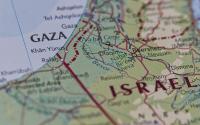9 August 2007Los Angeles Times
Any lingering doubts about how ill-prepared we are to face up to the reality of climate change should have been laid to rest this month when two Russian mini-submarines dove two miles under the Arctic ice to plant a Russian flag made of titanium on the seabed. The government of Vladimir V. Putin claims that the seabed under the North Pole, known as the Lomonosov Ridge, is an extension of Russia's continental shelf and therefore Russian territory that will be open for oil exploration.Russia is not alone in making such a claim. Geologists think that 25% of Earth's undiscovered oil and gas may be embedded in the rock under the Arctic Ocean. No wonder Norway, Canada and Denmark (through its possession of Greenland) are all using the continental-shelf argument to claim the Arctic seabed as an extension of their own sovereign territories. The sudden interest in Arctic oil and gas has put a fire under U.S. lawmakers to ratify the 1982 Law of the Sea Treaty, which allows signatory nations to claim exclusive commercial exploitation zones up to 200 miles out from their coastlines.What makes this development so depressing is that the interest in prospecting the Arctic seabed, and subsoil, is only now becoming possible because climate change is melting away Arctic ice.For thousands of years, the fossil fuel deposits lay locked under the ice and inaccessible. Ironically, the very process of burning fossil fuels releases massive amounts of carbon dioxide, or CO2, and forces an increase in the Earth's temperature, which in turn melts the Arctic ice, making available even more oil and gas for energy. Burning these potential oil and gas finds would further increase CO2 emissions in coming decades, depleting the Arctic ice even more quickly.But there is an even more dangerous aspect to the unfolding drama in the Arctic. While governments and oil giants are hoping the melting ice will allow them access to the world's last treasure trove of oil and gas, climatologists are deeply worried about something else buried under the ice that, if unearthed, could wreak havoc on the biosphere, with dire consequences for human life.Much of the Siberian sub-Arctic region, an area the size of France and Germany combined, is a vast, frozen peat bog. Before the most recent Ice Age, the area was mostly grassland, teeming with wildlife. The coming of the glaciers entombed the organic matter below the permafrost, where it has remained ever since. Although the surface of Siberia is largely barren, there is as much organic matter buried underneath the permafrost as there is in all of the world's tropical rain forests.Now the permafrost is thawing on land and along the seabeds. If it occurs in the presence of oxygen on land, the decomposing of organic matter leads to the production of CO2. If the permafrost thaws along lake shelves, in the absence of oxygen, the decomposing matter releases methane. Methane is the most potent of the greenhouse gases, with a greenhouse effect 23 times that of CO2.Katey Walter of the Institute of Arctic Biology at the University of Alaska in Fairbanks wrote in the journal Nature last year, and in Philosophical Transactions of the Royal Society in May, that the melting of the permafrost and subsequent release of methane is a "ticking time bomb."Walter and her researchers warned of a tipping point sometime within this century, when the release of methane could create an uncontrollable feedback effect, dramatically warming the atmosphere, which would in turn warm the land, lakes and seabed, further melting the permafrost and releasing more methane. Once that threshold is reached, there will be nothing humans can do. Scientists suspect that similar events have occurred in the ancient past, between glacial periods.Scientists are particularly concerned that the thawing permafrost is also creating shadow lakes across the Siberian sub-Arctic landscape. The lake waters have a higher ambient temperature than the surrounding permafrost. As a result, the permafrost near the lakes thaws more quickly, forcing the ground surfaces to collapse into the lakes. The stored organic carbon then decomposes into the lake bottoms. Methane from that decomposition bubbles to the surface and escapes into the atmosphere. Scientists calculate that thousands of tons of methane will be released from Arctic lakes as the permafrost thaws.A global tragedy of monumental proportions is unfolding at the top of the world, and the human race is all but oblivious to what's happening.When U.S. astronauts stepped onto the moon in 1969, Neil Armstrong's first words were, "One small step for man, one giant leap for mankind." The Russian aquanauts, landing on the Arctic seabed, might just as well have said, "One small dive for man, one giant leap backward for life on Earth."Jeremy Rifkin is the author of "The Hydrogen Economy: The Creation of the World Wide Energy Web and the Redistribution of Power on Earth."






